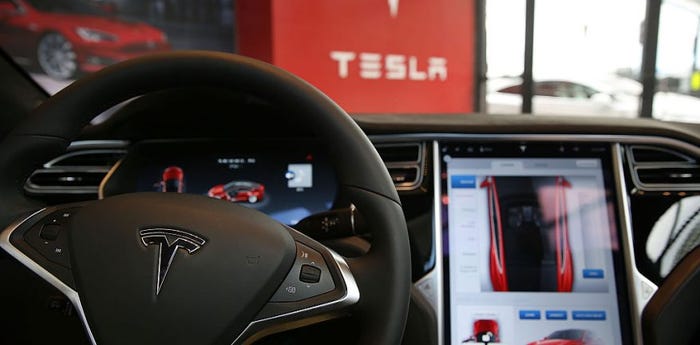What's Ahead for IoT at Mobile World Congress 2024
Omdia’s Andrew Brown takes a look at what we can expect to see at this year’s event in the IoT space
.png?width=850&auto=webp&quality=95&format=jpg&disable=upscale)
Mobile World Congress (MWC) 2024 Barcelona, is the largest and most influential event for the connectivity ecosystem. IoT has often been touted as the next frontier of connectivity but is undergoing a period of profound change. Revenues have not met the lofty (and in our opinion, inflated) expectations, while the value chain has shifted towards software and in particular, cloud hyperscalers. Decoupling IoT divisions is gaining prominence and consolidation is evident across the value chain.
So, what will we see at MWC 2024 in the IoT space?
Monetizing APIs
Omdia view: We expect to hear more about the GSMA Open Gateway, a framework of Application Programmable Interfaces (APIs) designed to provide universal access to operator networks for developers and hyperscalers. With shrinking margins in connectivity, there is a significant opportunity in telcos exposing APIs for easier developer integration into IoT projects, showcasing a range of approaches from simpler to deeper integration.
The ability of an operator to build and control the APIs that link developers’ and hyperscalers’ new applications with their networks will be pivotal to further monetizing the IoT opportunity. While the business models for monetizing APIs are still emerging, operators could earn returns by charging customers, developers and hyperscalers for access. Fees could be based on different parameters such as usage, time, or device, while developers and hyperscalers could be charged a fee and potentially a share of their revenues.
More Discussion Around AIoT (Combining AI and IoT) and the Intelligent Edge
Omdia View: The network edge has grown in size, value and power. The effects of the intelligent edge are percolating through the industry. Increased processing capabilities at the edge have the potential to decrease transmission costs dramatically, as any low-latency connection to the cloud will not be burdened.
Current cloud traffic has grown exponentially in recent years. Consequently, every major CSP has edge initiatives and will encourage continued offloading processing to the edge. Microsoft and AWS have long-established relationships with CSPs to develop edge solutions. Hyperscalers will be necessary to build a robust enough edge for large-scale advanced processing, especially for rapidly advancing applications such as SDVs (Software-Defined Vehicles). Applications like advanced driver-assistance systems (ADAS) and middle-stage autonomous driving will require zero latency, which cloud processing cannot deliver, pushing computing to the edge.
Edge installations have the advantage of bringing the network to the customer and, in some ways, even anticipate expanded private networks, all underpinned by improved security and privacy. With many clients impatient about the slow development of 5G SA for IoT applications, increasing processing at the edge will compensate for missing high-speed/high-bandwidth cellular connectivity.
eSIM and iSIM
Omdia View: We believe that 2024 will be a significant year for eSIM adoption in IoT, now that standards have been created to address LPWAN devices and there will be much discussion around advancement at MWC 2024. The network resilience eSIMs provide mitigates the significant costs associated with “truck rolls” in verticals such as energy and utilities. eSIMs are advantageous in verticals like financial and health care, where regulatory compliance and data governance are paramount, while it already proliferates widely in vehicles.
While the standards are far from perfect, some vendors offer proprietary solutions that can make these standards more useful. Additionally, the entire IoT market is being lifted by a more unified device ecosystem around 5G RedCap. Other factors such as greater awareness of the capabilities of eSIMs are encouraging enterprise adoption.
Hybrid/Cellular NTNs Make IoT More Resilient
Omdia View: We expect to see expanding IoT connectivity to non-terrestrial networks (NTNs), particularly the partnerships between telcos and satellite operators, aiming to cover “not spots” or “dead zones,” particularly in remote areas targeting agriculture or logistics. Traditionally, large CSPs have partnered with Geostationary Equitorial Orbit (GEO) satellite operators. More recently we are seeing IoT MVNOs forge their own relationships with satellite providers, as well as more Low Orbit Satellite (LEO) operators come to market with satellite constellations of their own.
As standards evolve, enterprises are being afforded more choices around connectivity. Hardware prices and service plans are becoming more affordable. The combination of both cellular and unlicensed LPWAN with satellite backhaul will help maximize coverage in lower margin verticals such as agriculture, while NTN with 5G or LTE will be better suited for verticals that are more mission critical such as automotive.
Read more about:
Mobile World Congress 2024About the Author(s)
You May Also Like



.png?width=700&auto=webp&quality=80&disable=upscale)
.png?width=700&auto=webp&quality=80&disable=upscale)
.png?width=300&auto=webp&quality=80&disable=upscale)
.png?width=300&auto=webp&quality=80&disable=upscale)
.png?width=300&auto=webp&quality=80&disable=upscale)
